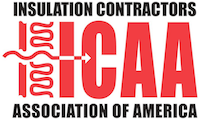Federal Insulation Tax Credit Q & A
Recent legislation has made this nonbusiness energy property credit available for 2018 through 2021.
What is the Section 25C federal tax credit?
Taxpaying homeowners can receive a federal tax credit up to 10% of their purchase of qualified energy efficiency improvements to their main home. The maximum credit permitted is $500. A tax credit reduces the tax owed, dollar for dollar.
What qualifies for the tax credit?
Building envelope components such as any insulation material or system that is specifically and primarily designed to reduce heat loss or gain of a home when installed in a home. This includes insulation, vapor and air retarders, and air sealants.
Does the tax credit apply to the cost of installing insulation?
The credit does not include the amounts paid for the installation of materials.
How does a taxpayer get the tax credit?
Your customers can use the latest version of IRS Form 5695 to apply for the tax credit.
Is there a lifetime limitation on this tax credit?
Currently, there is a tax credit limit of $500 for all tax years after 2005. Therefore, if the total of any of these tax credits taken in previous years, after 2005, is more than $500, taxpayers generally cannot take the credit.
Must tax filers attach to their tax return a manufacturer’s certification that a building envelope component is an eligible component for the tax credit?
For purposes of taking the tax credit, taxpayers can rely on a manufacturer’s certification in writing, but do not have to attach it to their return. Insulation manufacturers can present a certification to insulation contractors stating that its product is an eligible building envelope component for the tax credit.
